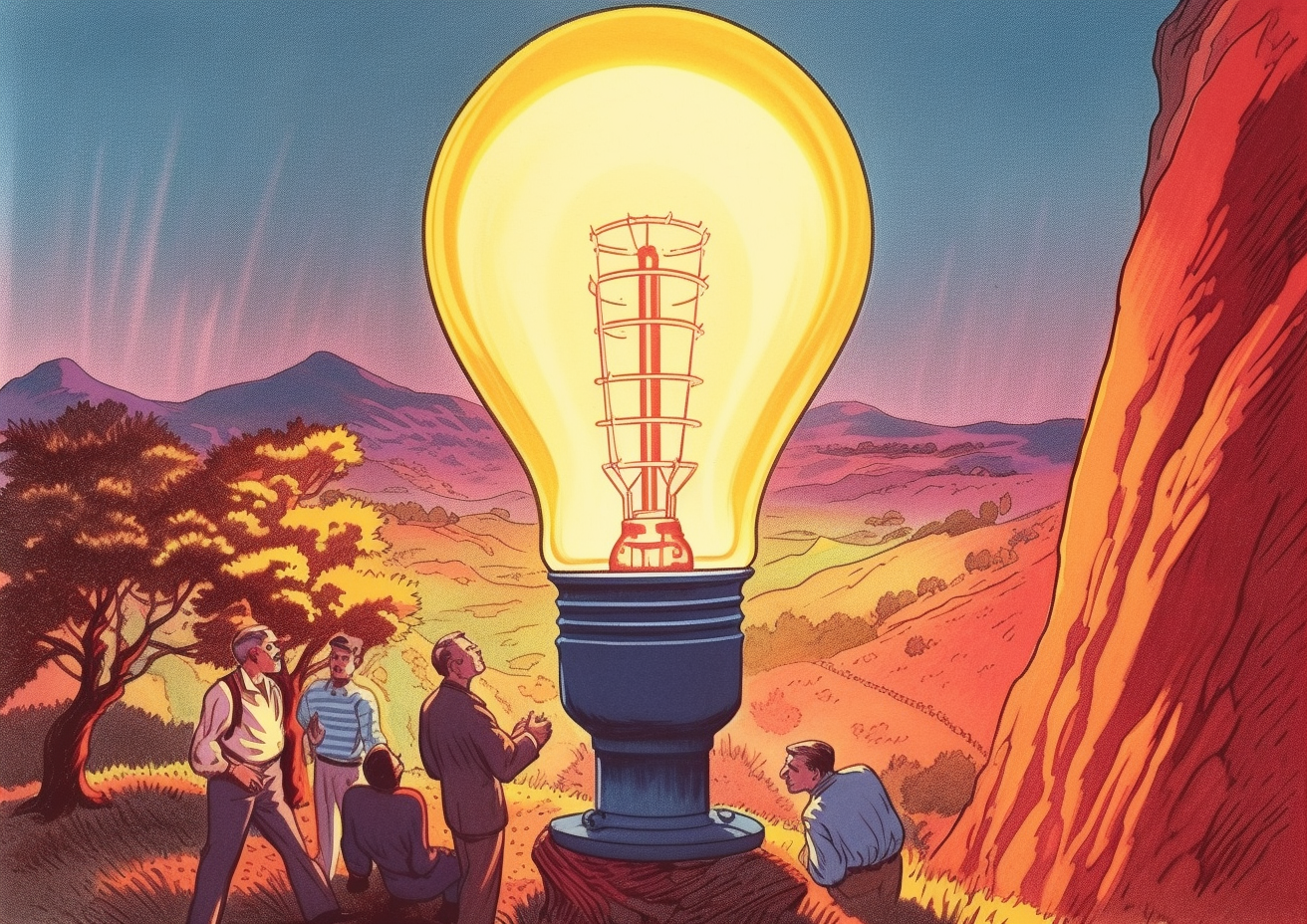
Long Live the Incandescent Bulb
The USG won't leave the lights on for you
Starting today, American retailers can no longer sell incandescent light bulbs. A Biden administration policy set a new minimum standard for light bulbs at 45 lumens per watt; incandescents tend to operate at about 12-18 lumens per watt. Thus, they're getting axed.
The design of the incandescent bulb has changed very little since Thomas Edison pioneered a cheap and easily reproducible version in 1879: a piece of tungsten completes a circuit and the current flowing over the filament heats it up and produces light.
I love incandescent bulbs, especially the Edison variety. They're marketed as nostalgic, but I prefer the word normal. I've bought and used the same light bulbs for going on ten years. In anticipation of the ban, I bought a bunch that I've since stored in my basement.
Of course, others feel differently, and there are options for them to explore should they be of the "buy this product to cool down the Earth" variety.
“This is a victory for consumers and for the climate — one that’s been a long time coming,” declared Steven Nadel, executive director of the American Council for an Energy-Efficient Economy, after rolling out the new standards last April.
It's unclear why outlawing stores from selling incandescent bulbs is a "victory for consumers" (I think you might have to have brain damage to comprehend that one).
It reminds me of when the state of California banned the sale of plastic straws, an initiative that quite literally sprang from the mind of a nine-year-old. Never mind that your iced coffee will come in a plastic cup with a plastic stirrer, that paper straw will save the turtles—plastic straws are the devil's work!
Supporters of the incandescent ban boast it will cut carbon emissions by 222 million metric tons over the next 30 years. A win for the numbers people.
Not so fast. For scale, consider that all the vehicles on the road emit 1,377 million metric tons of carbon every year. Averaged out over that 30-year period, the incandescent ban will reduce carbon emissions by 7.4 million metric tons per year– which only makes up for two days per year of vehicle emissions in the US.
But for PACs and NGOs that take donor money to work on things like this, the ban is a triumph. Finally, they have something they can show to their donors, a way to say, "Here, look! We do real work!" To be clear, it's not real work. Real work would be encouraging the development of nuclear power plants.
Instead, regulators and lobbyists will slowly advocate to lower your standard of living until your eyes are bleeding from newly-installed, state-mandated LED lights programmed to turn on only at environmentally optimal times.
I'd rather sit in the dark, to be honest. Maybe light a candle. I'm charting my escape plan now. I've got the bulbs stacked in the basement. I'll be dealing them out of the back of my jalopy once the government bans gas kitchen ranges and demands I register my microwave with the FDA. We'll have to transact through a barter system because surely they'll have banned cash by then, too.
I’m in the process of buying one of those high-powered tungsten bulbs that strip clubs use to draw in customers. If it doesn't bring down the city's power grid, it'll let you know where I'm set up.
